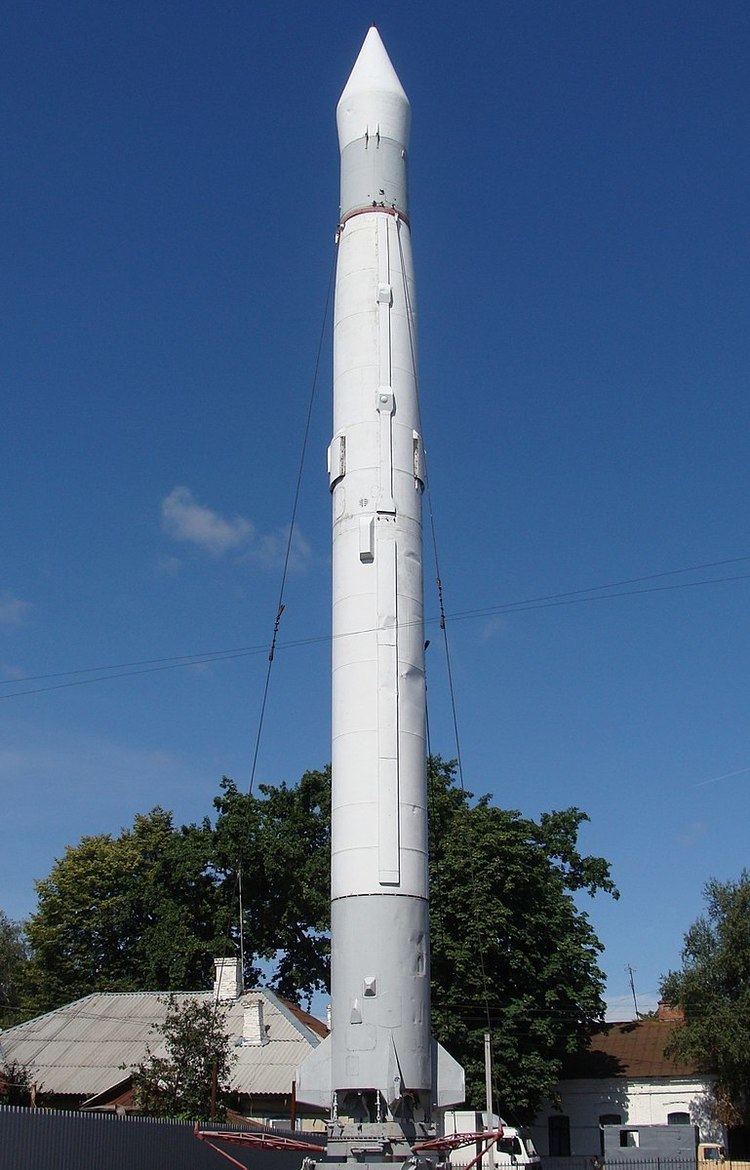Place of origin USSR Propellant Liquid | In service 1956-1967 Operational
range 1,200 km (750 mi) | |
 | ||
Type Theatre ballistic missile Warhead 60 \ 80 kt , 300 kt , 1 Mt (or more) thermonuclear warhead | ||
The R-5 Pobeda (Побе́да, "Victory") was a theatre ballistic missile developed by the Soviet Union during the Cold War. The R-5M version was assigned the NATO reporting name SS-3 Shyster and carried the GRAU index 8K51.
Contents
The R-5 was originally a development of OKB-1 as a single-stage missile with a detachable warhead reentry vehicle. The R-5M was a nuclear armed missile – the first nuclear missile to be deployed by the Soviet Union – with greater payload and weight but better reliability than its predecessor. The R-5M gave the Soviet Union the ability to target many strategic targets in Europe. The R-5M entered service on 21 May 1956 (retired in 1967), and in 1959 was installed at Vogelsang, Zehdenick and Fürstenberg/Havel in East Germany - the first Soviet nuclear missile bases outside of the USSR.
R-5 was additionally an oft-reported alternate designation for the Kaliningrad K-5 air-to-air missile.
